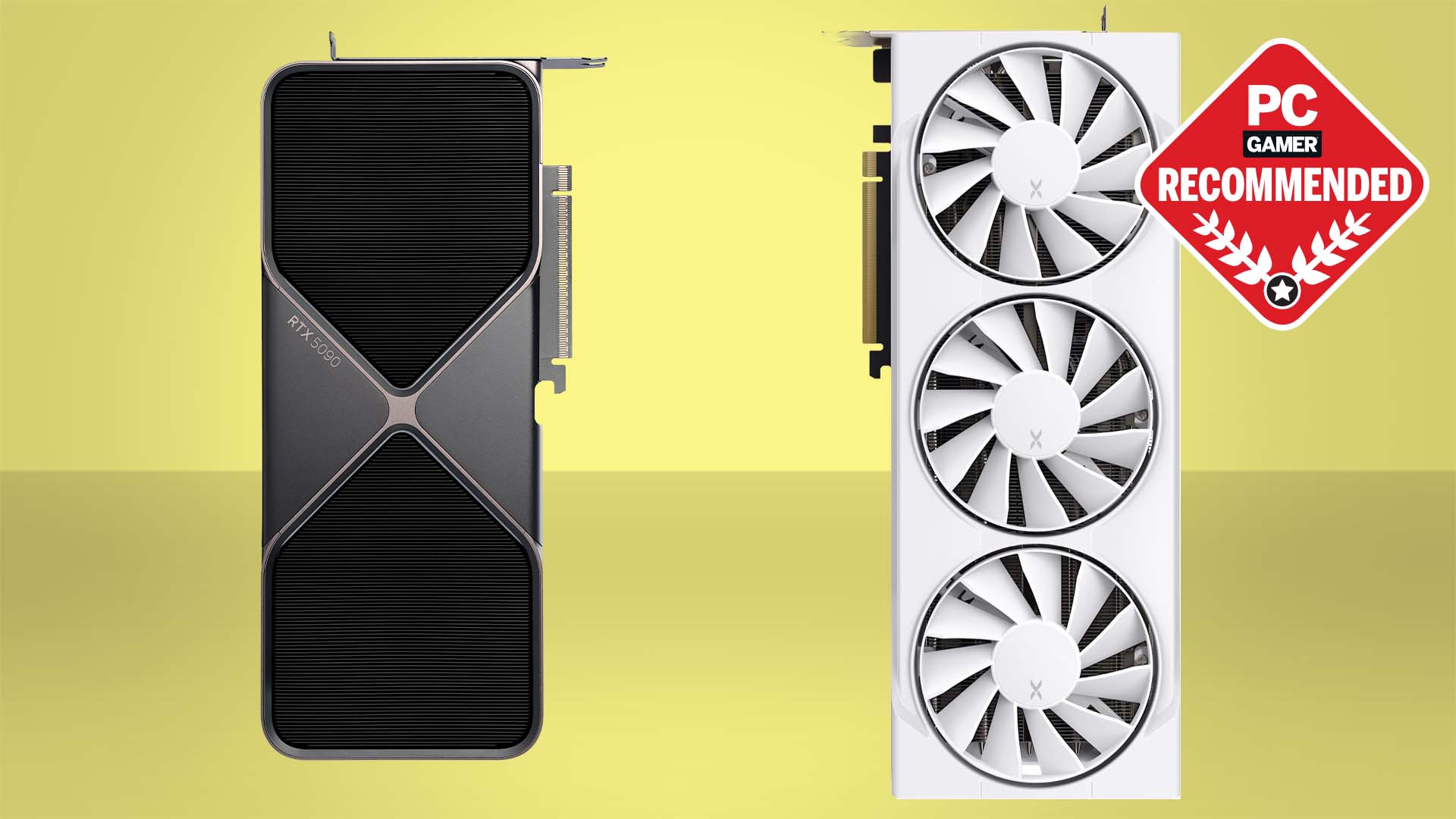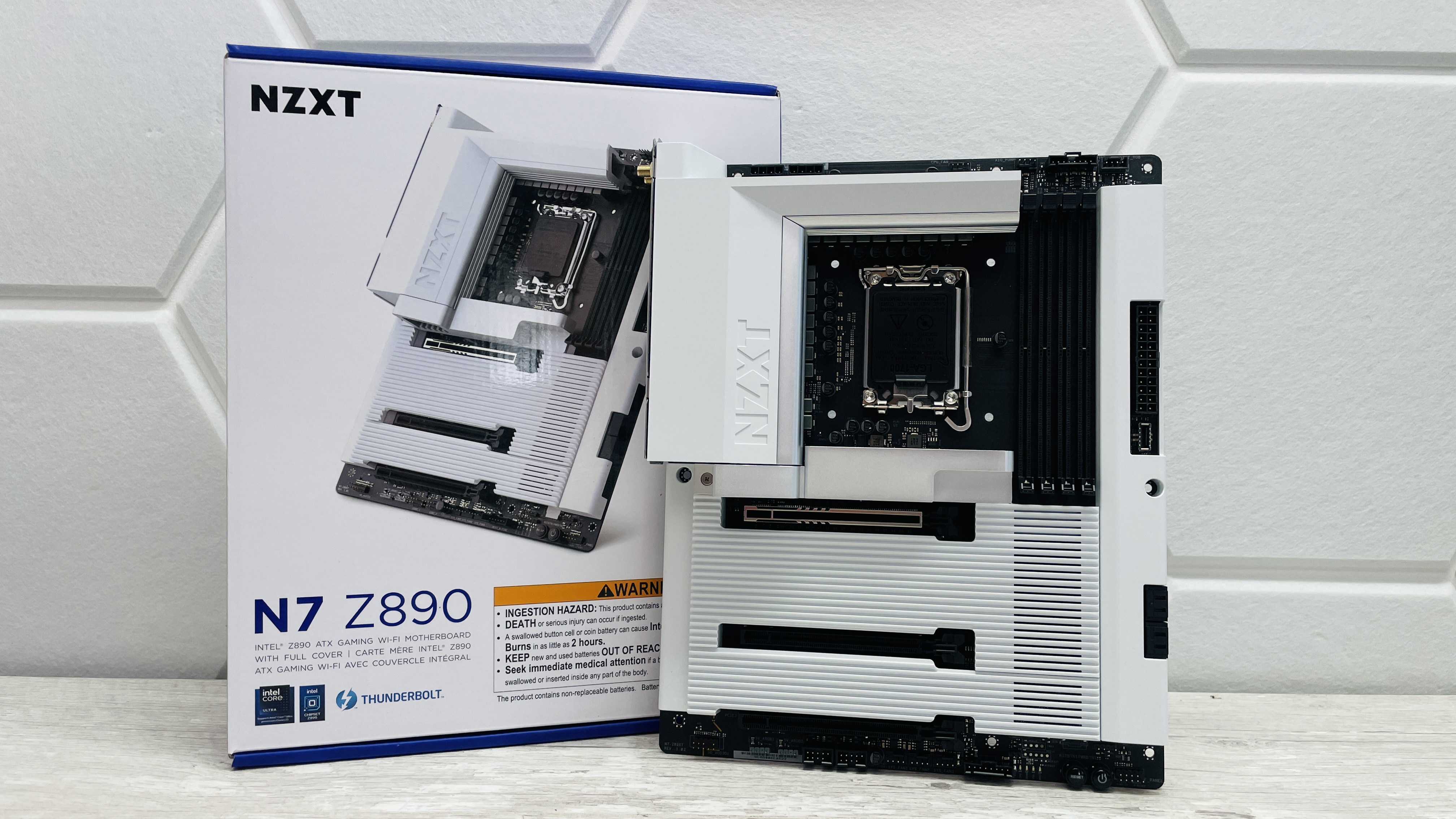Steam Link impressions: fantastic in-home streaming for $50
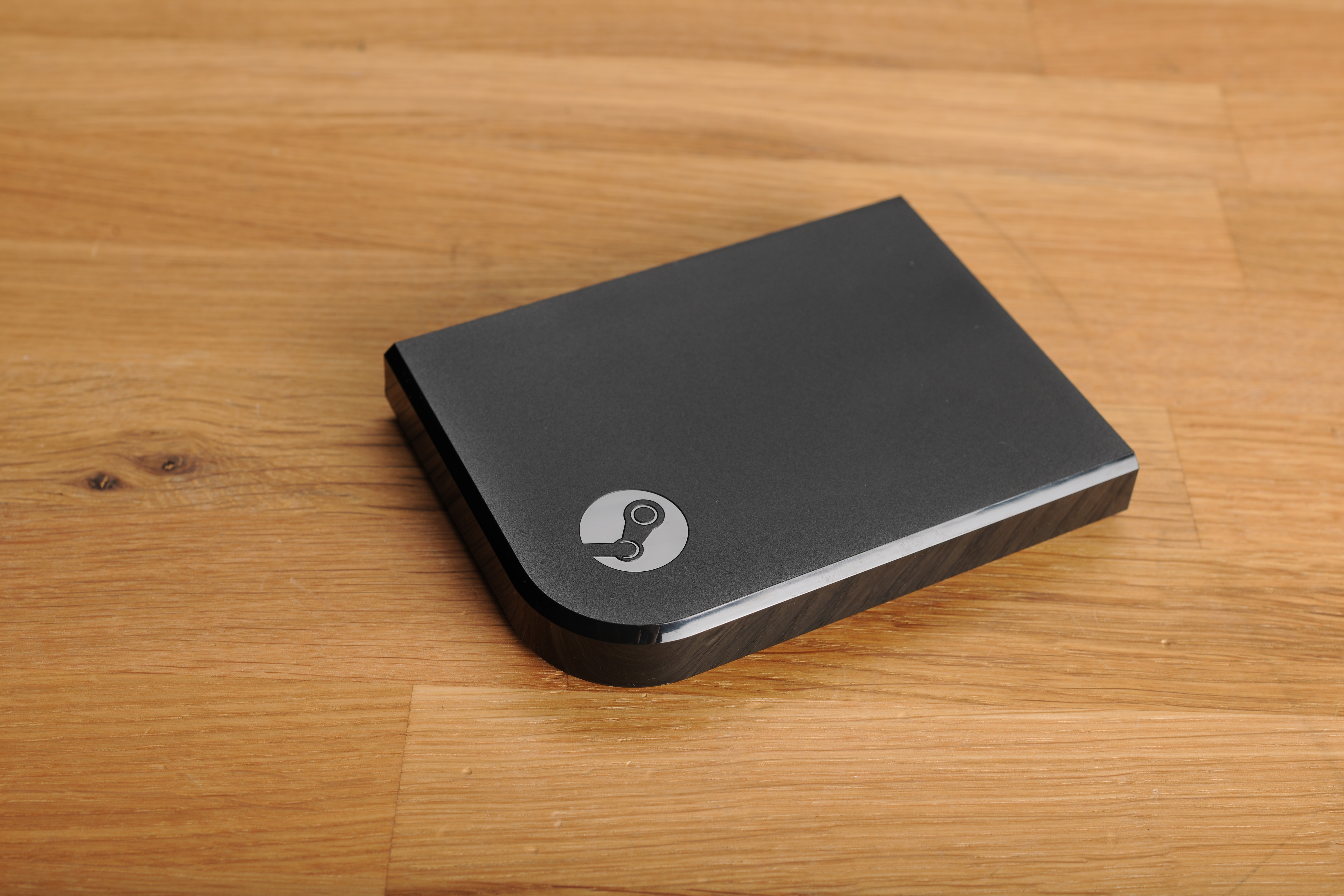
It’s baffling that the Steam Link costs $50 and does what it does so well. The Steam Link is a simple living room streaming box, like a Roku or an Apple TV, but focused on one thing and one thing only: streaming Steam’s Big Picture mode from a PC somewhere in your house. Half of the equation is software: Valve’s been working on its in-home streaming technology for more than a year, improving latency and compatibility to make even twitchy 60 fps games playable over a video stream. In-home streaming has gotten much, much better since it launched in 2014. I even managed to maintain a 60 fps stream in Killing Floor 2 over Wi-Fi in a quick test. That’s impressive.
The other half is the hardware, which I’m even more impressed with after a few hours of use. Comparable devices tend to cost significantly more than the Steam Link. The Roku 3 is $100. The new Apple TV is $150, while the old one is $70. The Doko, which cost $100 in early 2015, aspired to do what the Steam Link does, but with disappointing results. At $50, the Steam Link has been better in every way. It makes no compromises: it has 100 megabit Ethernet, 802.11ac Wi-Fi, bluetooth, HDMI out and three USB 2 ports for controllers or keyboard/mouse. Its on-board video decoder is up to the task of 1080p60 streaming.
The Steam Link won’t be the device to catapult Steam into a living room rival for the PS4, Wii U, and Xbox One, since it requires you to already own a powerful gaming PC. Valve’s Steam Machine initiative will have to shoulder that burden. But for those of us who already own a gaming PC, it feels like the living room device we’ve been waiting for.
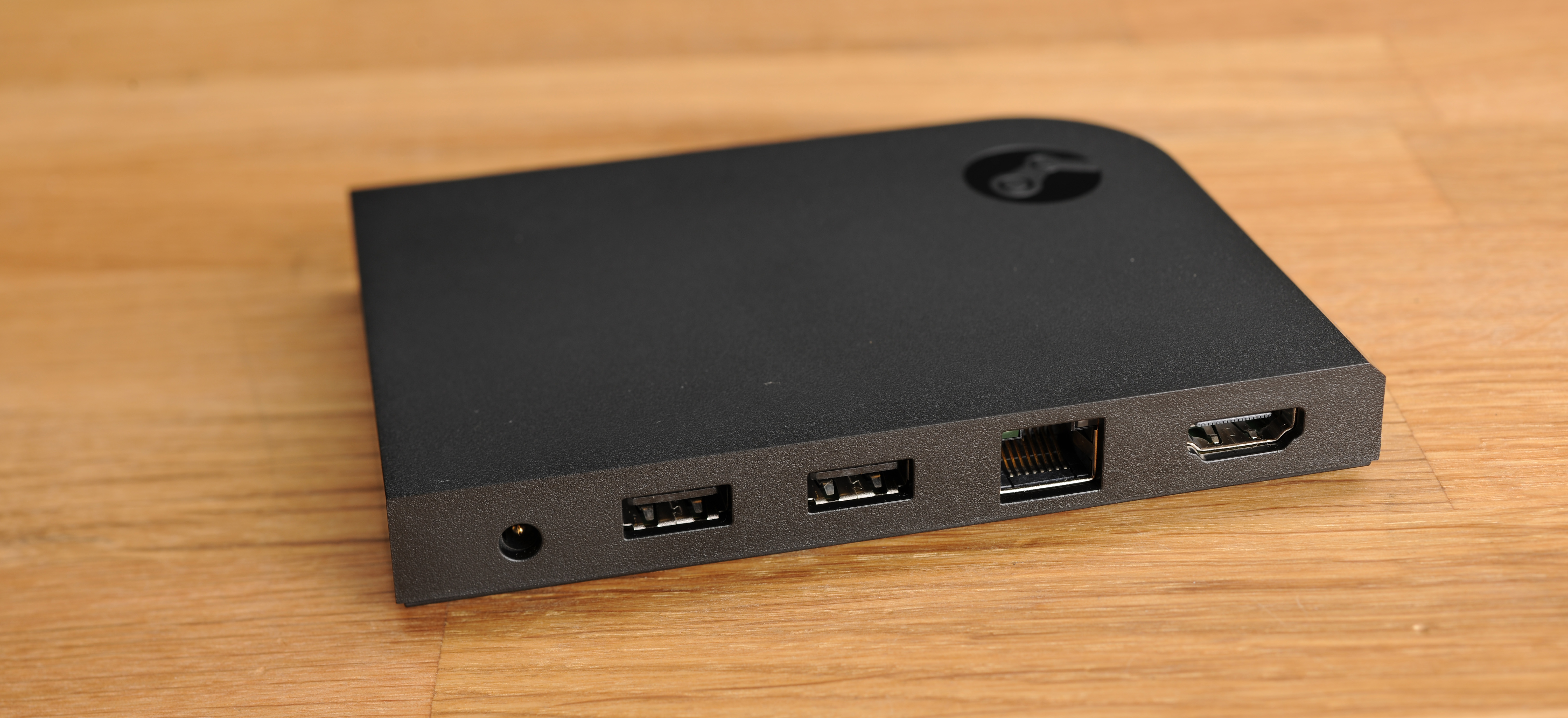
So far I’ve only had about four hours to play with the Steam Link, in two very different scenarios. First was at home, with the Link wired into a gigabit network in my living room, streaming from a desktop PC (also wired). Second was in the office, using two different systems as host devices (my work PC and the LPC Jr.), both wired. In the office, I tried out the Link streaming over Wi-Fi and wired into the company LAN. I was surprised that the wired network with dozens of devices connected to it didn’t create any problems; I was more surprised that the streaming actually worked well over Wi-Fi.
I first tested it with Killing Floor 2 and was able to maintain a consistent 60 frames per second while playing over Wi-Fi, running off my office PC with an R9 290X and an i7-X990 CPU (despite some powerful components, this system runs like crap most of the time). When I switched from Killing Floor 2 to Rayman Origins, performance tanked—and stayed slow and stuttery even after I exited the game. Best I could tell, my desktop PC was simply chugging under the strain of running and encoding the games. The Steam Link wasn’t at fault, but this does show that you’ll need a decent rig to handle running games at 1080p 60 while also encoding video.
You can see an example of the (really good!) Wi-Fi performance in Killing Floor 2 below, and an example of the (really bad!) Wi-Fi performance in Rayman Origins under that, once my computer started chugging. Note the results on the bottom left of the screen when you enlarge the images. These were captured on the “Balanced” performance setting with the framerate set to automatic (recommended).

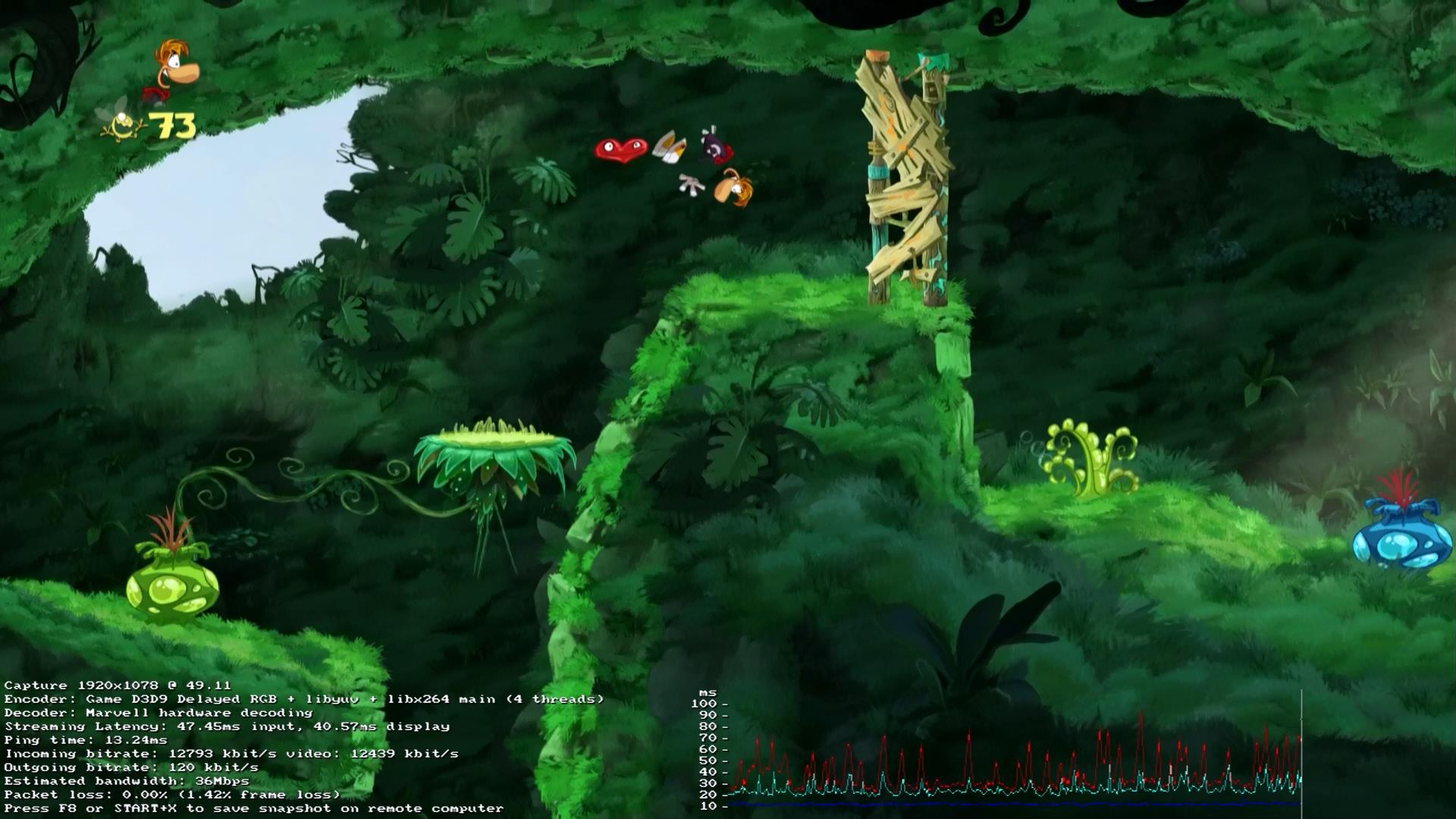
As you can see in the images above, the framerate dropped from a consistent 55-60 fps in KF2, with no perceptible input lag, to mid-40 fps with 5-25 (!) ms of streaming latency input lag in Rayman Origins. It’s important to note that my desktop PC wasn’t running the latest Steam client beta, which includes “dramatic changes to the streaming network code that should improve the experience on wireless networks,” according to Valve. I’ll be testing that more later.
Keep up to date with the most important stories and the best deals, as picked by the PC Gamer team.
Over the wired network at work, using the more powerful LPC Jr., performance was fantastic. Streaming latency was usually 0.1-0.2 ms. That’s nothing. In the wired setup at home, performance felt just as snappy. Responsiveness was just as fantastic. Image quality was another story, though. During high motion scenes in Rocket League, there was some clear video artifacting blockiness. I only noticed it while I was sitting unusually close to the TV (I was about three feet/one meter away from our 70-inch plasma). That image quality wasn’t a dealbreaker, and I don’t think it’ll really be noticeable in many games at a reasonable distance from the display. But it is a reminder that you’re not playing a perfectly sharp game running natively on the display.
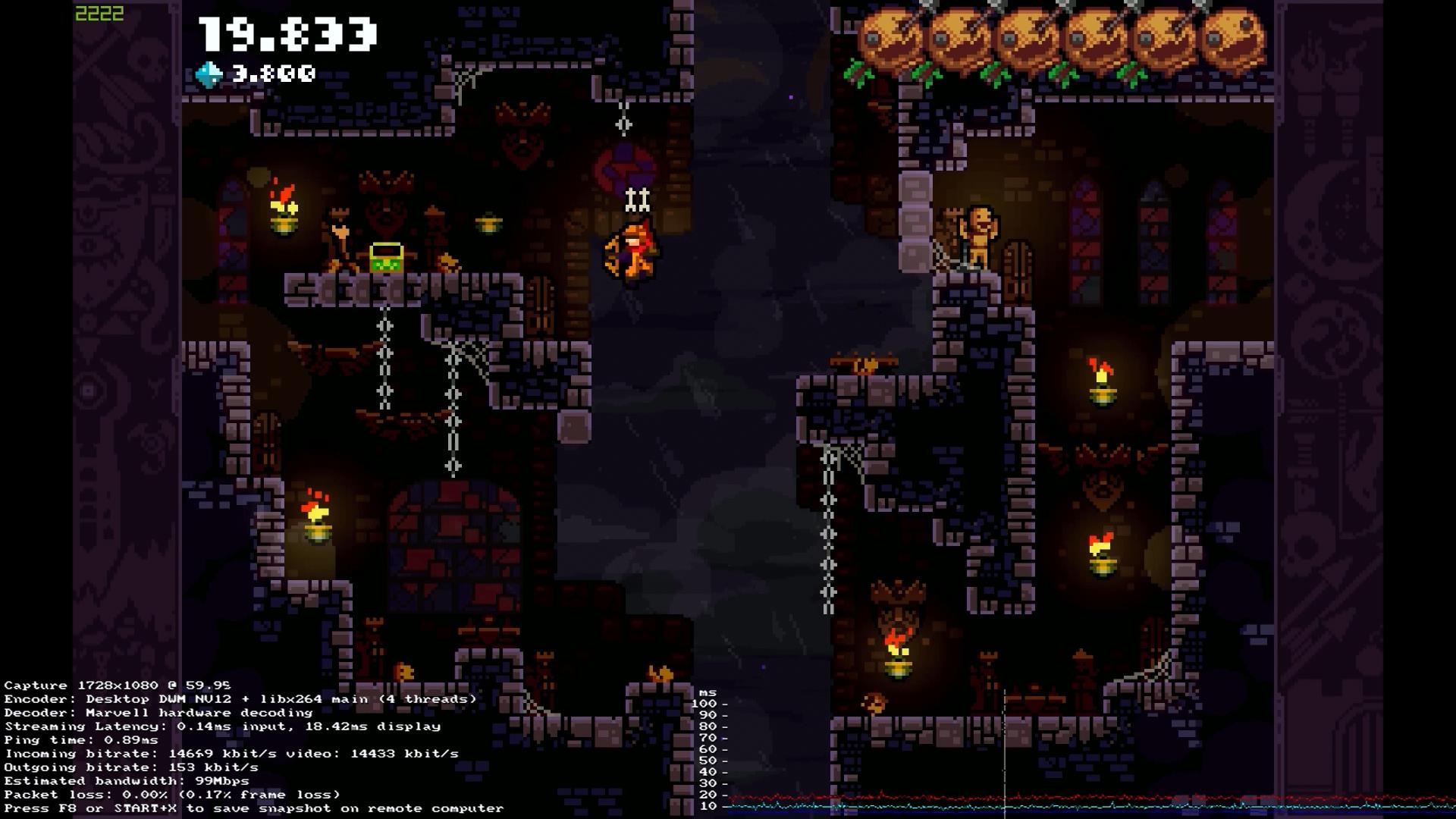
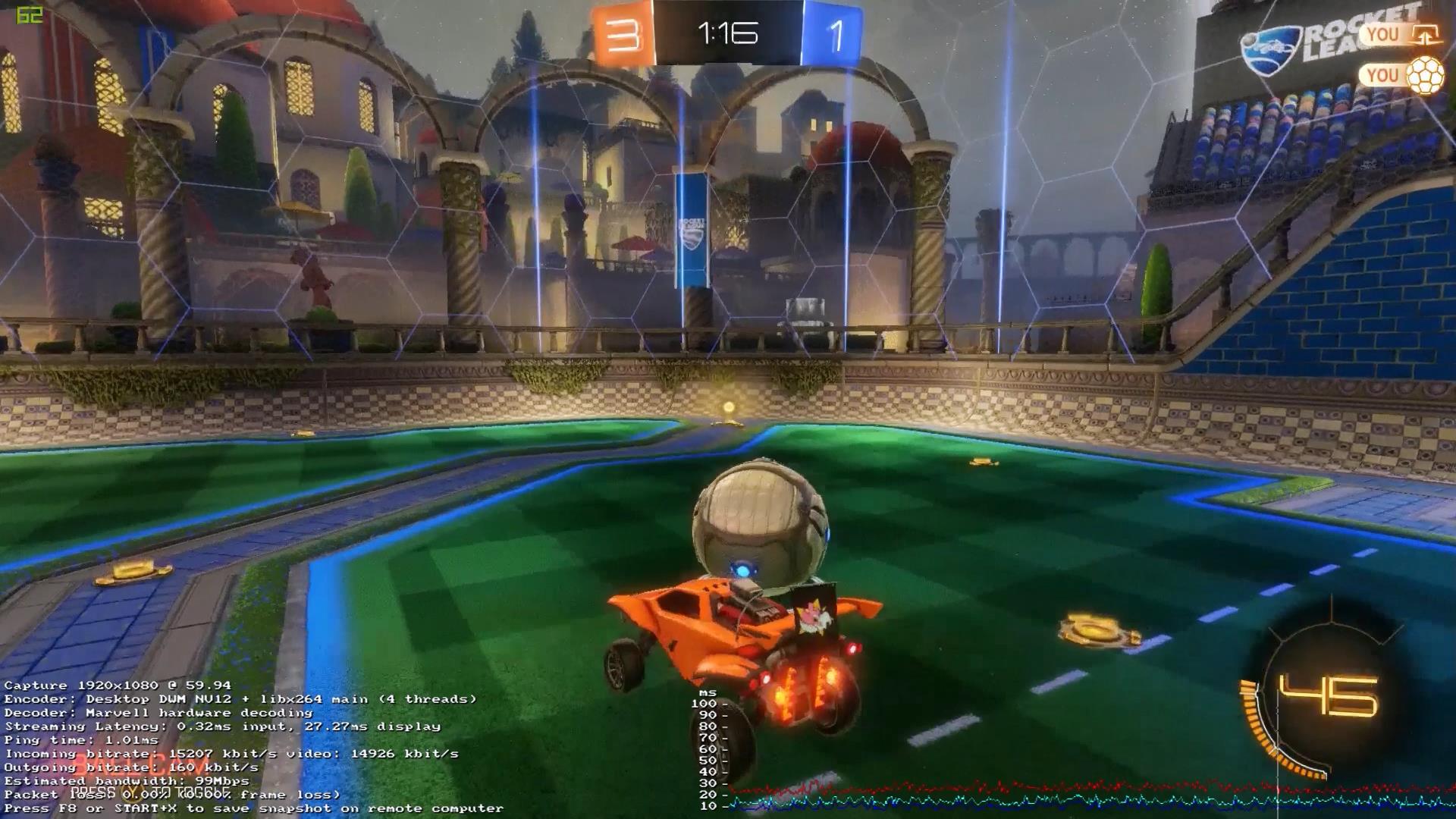
It’s hard to show off that blockiness, because any encoded web video is going to introduce its own artifacting. I plan on playing a wider range of games on the Steam Link in the coming weeks, wired and wireless, to more thoroughly test latency and image quality.
Right now, my early impressions of the Steam Link are that it’s the exact device we want for living room streaming, delivering the performance it needs to. It can’t completely overcome the limitations of its technology—wireless will still introduce more latency, video encoding won’t be as sharp as a natively rendered image—but the hardware, at least, is ready for prime time.

Wes has been covering games and hardware for more than 10 years, first at tech sites like The Wirecutter and Tested before joining the PC Gamer team in 2014. Wes plays a little bit of everything, but he'll always jump at the chance to cover emulation and Japanese games.
When he's not obsessively optimizing and re-optimizing a tangle of conveyor belts in Satisfactory (it's really becoming a problem), he's probably playing a 20-year-old Final Fantasy or some opaque ASCII roguelike. With a focus on writing and editing features, he seeks out personal stories and in-depth histories from the corners of PC gaming and its niche communities. 50% pizza by volume (deep dish, to be specific).
